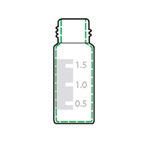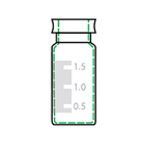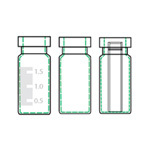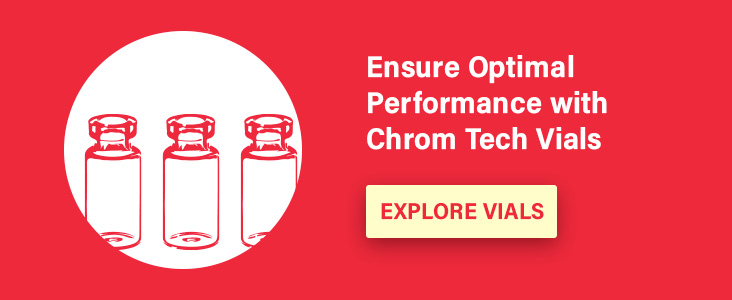Posted by Chrom Tech on 16th Oct 2025
Are Your Autosampler Vials Compromising Your Results?
Exploring the Impact of Vial Quality on HPLC and GC Performance
In chromatography, precision instrumentation is only part of the equation for reliable results. The consumables you choose—including vials and closures—can dramatically influence the accuracy and consistency of your data. Selecting the right autosampler vials ensures the integrity of your samples and reduces the risk of contamination, evaporation, or inconsistent recoveries. In this article, we explore how vial type, closure style, and material selection can impact both HPLC and GC performance.
Closure Style Variations
Both high-performance liquid chromatography (HPLC) and gas chromatography (GC) rely on specialized vial designs tailored to each method’s requirements. HPLC vials commonly feature screw thread or snap top designs, which allow for quick, repeatable opening and closing—ideal for high-throughput environments. In contrast, GC vials often utilize crimp tops that provide a superior seal—critical for containing volatile compounds under elevated temperature and pressure conditions.
Application-Specific Considerations: Sample Integrity and Compatibility
Maintaining sample integrity is crucial for reliable chromatographic analyses. HPLC vials are commonly made from borosilicate glass or plastic. Glass vials are chemically inert and ideal for most solvents, while plastic vials provide added durability and cost-efficiency for high-throughput or less chemically demanding applications. In contrast, GC vials require crimp-top glass construction to withstand high temperatures and pressures, ensuring secure sealing for volatile analytes. Some LC applications also benefit from crimp closures—particularly those involving chain of custody or strict containment protocols.
Equally important is the compatibility of septa and vial materials with your solvents and analytes. Using inert materials such as PTFE/silicone reduces the risk of leaching, adsorption, and sample degradation—ensuring cleaner baselines and more accurate quantitation.
Effect on Analytical Performance
Vial quality directly affects precision, accuracy, and reproducibility. Low-quality or contaminated vials can introduce background noise, ghost peaks, or inconsistent recoveries. Chrom Tech vials are manufactured in the U.S. using advanced production methods for consistent quality, clarity, and performance. We also supply specialty vials such as silanized, low adsorption, and pre-cleaned options to meet specific analytical requirements.
It’s also important to ensure the vial size matches your sample volume. Chrom Tech offers maximum recovery vials, vial inserts (available pre-loaded or separately), and multiple vial sizes to accommodate micro to macro sample volumes and prevent evaporation or sample loss.
Choosing the Right Vials for Your Application
To ensure the highest data quality, consider the following when selecting autosampler vials for your analytical system:
- Closure Style: Select closures that ensure a reliable seal and prevent evaporation of volatile analytes.
- Sample Compatibility: Match vial materials and septa to your solvents and sample matrices for chemical inertness.
- Application-Specific Factors: Choose vials and closures rated for your system’s temperature and pressure conditions.
- Sample Volume: Use appropriately sized vials or inserts to ensure optimal sample recovery and injection consistency.
Whether you’re working in HPLC or GC, selecting the proper vial system protects your samples, improves reproducibility, and enhances your instrument’s performance. Chrom Tech provides a wide range of premium autosampler vials and closures—ensuring precision and quality at competitive prices.
Frequently Asked Questions
How do vial materials affect chromatography results?
Glass vials provide chemical inertness and clarity for most HPLC applications, while plastic vials offer durability and reduced risk of breakage. Choosing the right material prevents contamination, adsorption, and solvent interaction that can skew analytical results.
When should I use crimp top vials instead of screw top?
Crimp tops provide a tighter seal, making them ideal for GC applications or volatile samples that require maximum containment. Screw tops are more convenient for HPLC methods with frequent access or lower volatility concerns.
What are low adsorption or silanized vials used for?
Low adsorption and silanized vials minimize compound binding to glass surfaces, making them ideal for trace-level, biological, or high-sensitivity analyses where recovery and reproducibility are critical.





